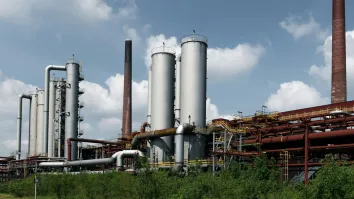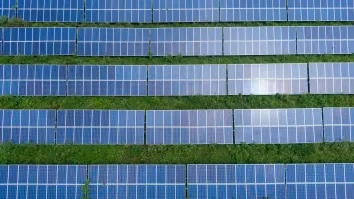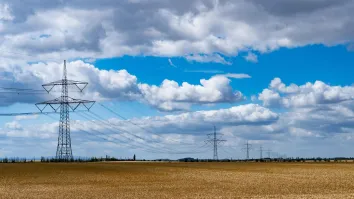
Engaging stakeholders and cultivating ESG culture empower change in oil and gas industry – EY Asia-Pacific Oil & Gas Leader, Sanjeev Gupta
For energy transition to be successful in Asia, the oil and gas sector must manage the growing energy demand, secure investments for renewables and integrate intermittent energy sources into existing grids, whilst leveraging opportunities to diversify the energy mix and improve resilience.
Asia’s oil and gas sector is undergoing significant transformations driven by sustainability goals, renewable energy adoption, digitisation, and the integration of ESG principles. For the region’s oil and gas players, finding the right balance between rapid growth against commitments to environmental responsibility and energy efficiency will be key to a successful and sustainable energy transition.
Based in Singapore, Sanjeev Gupta is Partner, Strategy and Transactions at EY Corporate Advisors Pte. Ltd. and is also currently the EY Asia-Pacific Oil & Gas Leader.
With over 30 years of professional experience, Gupta has a deep understanding and extensive knowledge of the energy sector. He has worked with the Big Four in various countries, including Indonesia, New Zealand, Australia, the United Arab Emirates, Saudi Arabia, and India. He has a global perspective, having travelled to more than 130 countries to serve his clients in the energy industry.
Gupta’s expertise lies in providing assurance, advisory and consulting services on complex projects to a wide range of energy sector players including super majors, national oil companies, large independents, and other corporations involved in upstream, midstream, downstream, oil field services, trading, marketing, treasury, shipping, logistics and storage.
As a judge at the Asian Oil & Gas Awards 2023, Gupta shared his insights on trends and innovations that are driving advancements in the Asian oil and gas industry. He also delved into the role of ESG and energy efficiency in sustainable energy development.
With your extensive experience in the energy sector, what trends or innovations have you observed that are driving advancements in the Asian oil and gas industry? How do these trends align with the goals of sustainable energy development?
One of the key trends we are seeing across Asia is that many countries have been making major strides toward sustainability goals. Countries like China, India, and Malaysia are realising the need to strike a balance between growing exponentially and sustainably.
Notably, large-scale promotion of renewable energy is reducing dependency on fossil fuels, whilst incentivising the use of low carbon transportation and adoption of green building initiatives have landed small but positive steps toward the sustainability goal. At the same time, many Asian countries have established policies and initiatives, such as the introduction of renewable energy targets and carbon pricing mechanisms, as well as the promotion of energy efficiency to reduce carbon emissions and enhance energy utilisation.
Given the shift toward cleaner and more sustainable energy resources, there is greater emphasis on renewable energy such as solar, wind, and hydropower. As well, liquefied natural gas (LNG) is one of the key fuels that is considerably easier to source than other renewables. Hence, we are seeing increased investments in specialised import LNG terminals and regasification facilities that have resulted in the growing LNG market in the region. Fueled by low gas prices, countries like Japan, Korea and India are shifting more of their power generation capacity to LNG-based energy production.
Also driven by the pursuit for clean energy, the hydrogen economy, especially blue and green hydrogen, is touted as the future of energy with carbon capture and storage as the transitionary technology, and countries are investing in the hydrogen economy. For example, the Japanese government has pledged US$107b in investments in the supply of hydrogen over the next 15 years in line with its plan to become a “hydrogen society”.
Another major trend that we are seeing across companies in the oil and gas sector in Asia is the growing emphasis on digitisation to improve operations. This includes applying data analytics, artificial intelligence (AI) and machine learning to optimise production, reduce costs, and improve safety.
As governments in Asia tighten scrutiny on carbon emission declarations in line with the European Sustainable Finance Disclosures Regulation (SFDR), a handful of companies have started voluntarily declaring emission control reports and targets in their annual reports.
There has also been increased collaboration and partnerships between major players in the oil and gas industry in the form of joint ventures, technology sharing, and knowledge exchanges to address common challenges, share resources, and accelerate innovation.
In recent years, there has been an increased focus on environmental, social, and governance (ESG) factors in the oil and gas industry. From your perspective, what role does ESG play in the decision-making process for oil and gas companies operating in Asia and how can companies effectively integrate ESG considerations into their operations?
Environmental, social, and governance (ESG) is an important consideration for oil and gas companies globally as well as in Asia.
In terms of the environmental factor, Asia accounts for one-third of global greenhouse gas emissions and 60% of the world's coal consumption. With increased concerns about climate change, oil and gas companies in Asia are facing pressure to reduce their carbon footprint, minimise greenhouse gas emissions, and adopt cleaner technologies. Hence, ESG-driven initiatives, such as carbon reduction targets, renewable energy investments, and environmental impact assessments, can play a crucial role in guiding the decision-making process.
In terms of the social factor, oil and gas companies need to engage with local communities, ensure health and safety standards, and respect human rights. Community engagement programmes, social impact assessments, and stakeholder consultations are essential to maintain a social license to operate and mitigate potential conflicts with local communities.
Lastly, the oil and gas sector is highly regulated. Hence, strong corporate governance is critical for oil and gas companies to enhance transparency, accountability, and investor confidence. Companies are expected to have robust policies and practices in board independence, executive compensation, risk management, and anti-corruption measures.
Together, these ESG considerations influence oil and gas companies in their strategies, operational practices, and investment and funding opportunities. Companies that effectively integrate ESG principles into their operations are more likely to meet the expectations of investors, regulators, and other stakeholders, ultimately improving their long-term sustainability and competitiveness.
To this end, companies first need to establish an ESG strategy by defining their ESG goals and creating a comprehensive strategy that aligns with their core business values. This involves understanding the specific ESG issues that are most relevant to the oil and gas industry and setting measurable targets and time-bound objectives to guide decision-making and monitor progress.
To effectively integrate ESG considerations, it is important to regularly engage with internal and external stakeholders for mutually beneficial projects and to promote sustainable practices. An important element in the ESG journey is the people and culture. Investing in training and education will help employees better grasp the significance of ESG and their role in sustainable practices. This will foster a shared responsibility and encourage employees to contribute to ESG goals.
Energy efficiency plays a significant role in reducing carbon emissions and achieving sustainable energy goals. From your experience, what are some of the most effective strategies and technologies that oil and gas companies can implement to improve energy efficiency in their operations? Can you provide examples of successful energy efficiency initiatives in the Asian oil and gas sector?
Energy-efficient initiatives for the oil and gas sector have largely focused on reducing energy consumption and environmental impacts in their exploration and production, as well as transportation and storage. These include optimising well location and productivity, using energy-efficient equipment, fuel switching, replacing diesel or gas internal combustion engines with grid power, spinning reserve optimisation with short-duration energy storage batteries, using heat exchangers for waste heat recovery, and metering for flaring design management.
An important consideration that oil and gas companies should consider is leveraging data analytics and digital technology to transform operational and business processes. Data analytics can unlock new insights into the energy consumption patterns in their operations, allowing oil and gas companies to track and identify the more energy-intensive equipment, processes and practices. They can then look into digital technology to enhance the processes and operations, thereby improving energy efficiency for the organisation for a sustainable future.
With the ongoing digital transformation across industries, how do you see emerging technologies, such as artificial intelligence, data analytics, and blockchain, impacting the Asian oil and gas sector? What specific applications or opportunities do these technologies present for sustainable energy development in the region?
Indeed, digital transformation is a developing but important trend for the oil and gas sector. Emerging technologies like AI, data analytics, and blockchain have the potential to bring about improvements in operational efficiency, safety, and sustainability.
For example, AI can be used to analyse data to identify patterns, predict equipment failures, and optimise production operations. AI techniques can also help to analyse seismic data, geological surveys, and historical production data to identify optimal drilling locations, whilst AI-enabled systems can enhance safety measures through real-time data to detect potential hazards thus preventing accidents.
Advanced data analytics allows real-time monitoring and analysis of operational data, helping to identify areas for optimisation and reduce downtime. It also allows for predictive maintenance, asset performance optimisation and efficient resource allocation. Data analytics can optimise energy consumption by analysing energy usage patterns, identifying energy-saving opportunities, and facilitating demand response strategies. Data analytics can also assist in monitoring and reporting environmental parameters, emissions, and compliance with regulatory requirements.
Blockchain technology can enhance transparency and traceability in supply chain operations, from tracking the origins of materials, verifying compliance with sustainability standards to streamlining supply chain processes. Blockchain-based smart contracts can also automate and streamline contractual processes, reducing administrative overhead and improving efficiency in areas such as procurement, invoicing, and payment settlements. Blockchain platforms can facilitate peer-to-peer energy trading, enabling the integration of renewable energy sources and optimising energy distribution within microgrids.
Other emerging technologies such as the Internet of Things (IoT) and sensors can collect real-time data and monitor various parameters such as equipment performance, asset integrity, and environmental conditions. This enables proactive maintenance, improves safety, and enhances operational efficiency. Robotics and automation technologies such as drones and autonomous robots can support operations such as inspections of infrastructure and facility maintenance in hazardous environments.
Digital twin technology creates a virtual replica of physical assets or processes, allowing real-time monitoring, simulation, and optimisation. It enables predictive maintenance, scenario planning, and performance optimisation, leading to improved operational efficiency and reduced costs.
Augmented reality and virtual reality technologies can also be used for training, simulations, and remote collaboration to improve efficiency, safety, and reduce risks.
The energy transition is a global priority, and the Asian region plays a crucial role in this transformation. In your opinion, what are the key challenges and opportunities specific to the Asian oil and gas sector in achieving a successful energy transition?
There are two main challenges hindering the progress of energy transition. The first is the growing demand resulting from rapid industrial growth and urbanisation, coupled with the abundant availability of cheap coal resources. The second is securing investments in infrastructure required for renewables. The scale and cost of building renewable energy plants, transmission networks and storage facilities can involve large upfront costs. Financing the transition and ensuring the affordability of renewable energy technologies is a major barrier.
Integrating intermittent renewable energy sources into existing power grids presents another issue. The variability of renewables and their limited predictability require the development of advanced grid management systems, energy storage technologies and flexible demand response mechanisms to ensure grid stability and reliable power supply
Hence, authorities need to establish clear and supportive policies and regulations to drive the energy transition. Governments need to provide stable and long-term policy frameworks that encourage investment in renewable energy, set targets, and establish favourable market conditions. Streamlined permitting processes and grid access for renewable energy projects are also crucial.
Asia is the largest market for energy that is buoyed by strong economic growth. It has the potential to attract large investors by diversifying the energy mix with renewable sources. Renewable energy systems, coupled with energy storage and microgrids, can improve resilience in the face of natural disasters, grid disruptions, and other challenges.
As a judge at the Asian Oil & Gas Awards, what criteria do you consider when evaluating nominees? Can you elaborate on the specific qualities or achievements that impress you the most in the oil and gas industry?
I would evaluate nominees based on five criteria.
The first is how they consider sustainability and ESG factors in their business. Specifically, I will be evaluating their commitments to reduce emissions, as well as investments in renewable energy projects and adopting carbon capture utilisation, and storage (CCUS).
The second criterion is how they minimise their environmental impact. These approaches include efforts to minimise air and water pollution, waste management practices, and initiatives to protect biodiversity and ecosystems.
The third criterion is the nominee’s investment in research and development, technological innovation, adaptation to new industry trends, as well as efforts to incorporate digitalisation, automation, and cleaner energy technologies in their operations.
Next, the nominee’s ability to navigate the regulatory and political landscape also needs to be evaluated. Important points to consider would be the company's compliance with local and international regulations, their relationships with regulatory bodies and the potential impact of changes in regulations or political factors on their operations.
The last criterion is the company’s engagements with stakeholders such as indigenous groups as well as local communities, their transparency in communication, their ability to address stakeholder grievances and how they collaborate with governmental bodies and non-governmental groups.



















 Advertise
Advertise







